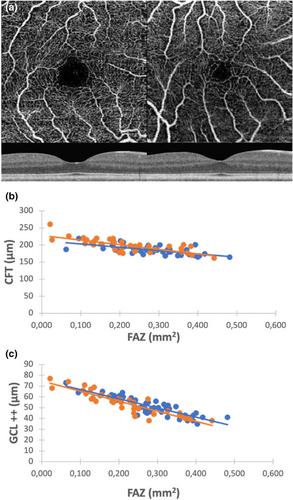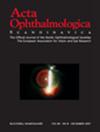Foveal thickness and vascular variables in adolescents born moderate-to-late preterm
Abstract
Purpose
It is well established that children born very preterm are at increased risk for ocular abnormalities including altered foveal morphology. However, little is known about how children born moderate-to-late preterm (MLP), gestational age 32 + 0–36 + 6 weeks, are affected later in life. This study investigates foveal avascular zone (FAZ) area, vascular density (VD), central foveal thickness (CFT) and ganglion cell layer thickness (GCL++) of adolescents born MLP without history of retinopathy of prematurity and compare the results with full-term controls.
Methods
In a prospective population-based cohort study, 50 adolescents (26 girls; mean age 16.5 years) born MLP were examined with optical coherence tomography (OCT) and OCT angiography (OCT-A). FAZ and VD were obtained from OCT-A scans and adjusted for ocular magnification. CFT and GCL++ were obtained from the OCT scans. The results from the MLP individuals were compared with the results from 49 healthy full-term controls (29 girls; mean age 16.7 years).
Results
The results showed statistically significant differences in FAZ area (0.22 vs 0.28 mm2; p = 0.0032) and CFT (198.1 vs 187.1 μm; p = 0.0010) between the MLP group and controls. Strong correlations between FAZ area and CFT (r = −0.773, p < 0.0001) and GCL++ (r = −0.924, p < 0.0001) were found in the MLP group. There were no differences in VD.
Conclusions
Our results show that adolescents born MLP have a smaller FAZ area and an increased CFT compared with full-term controls. These results indicate that adolescents born MLP have similar parafoveal changes as children born extreme or very preterm.


 求助内容:
求助内容: 应助结果提醒方式:
应助结果提醒方式:


